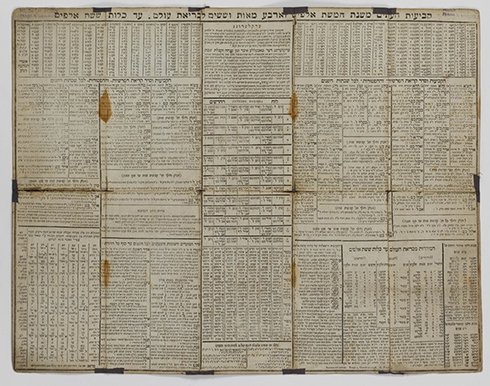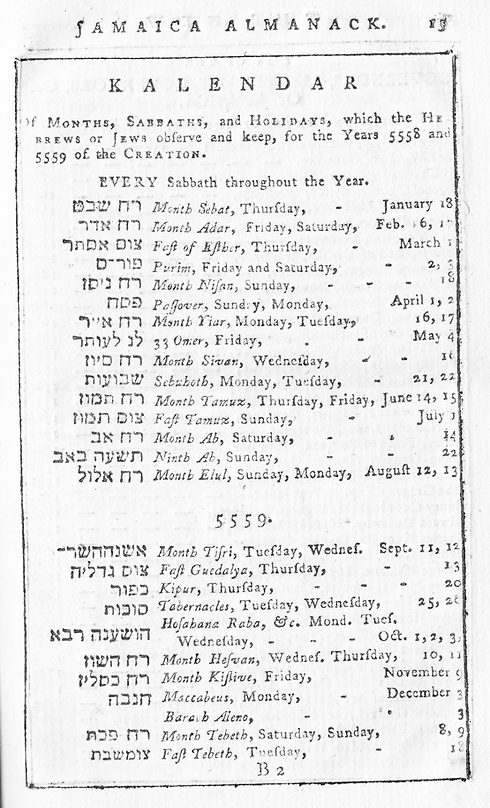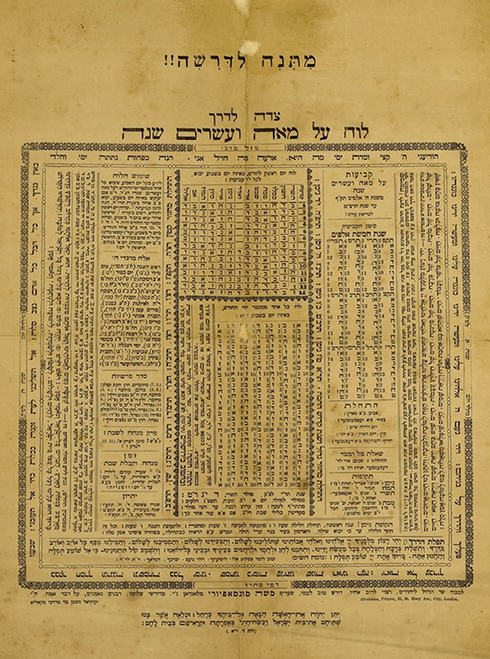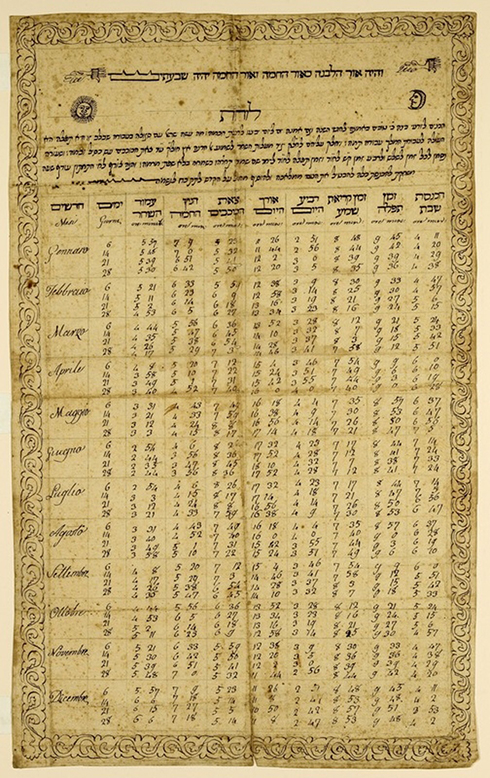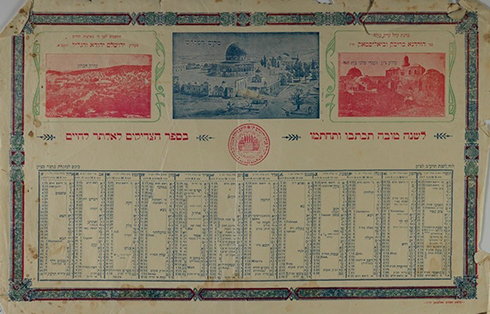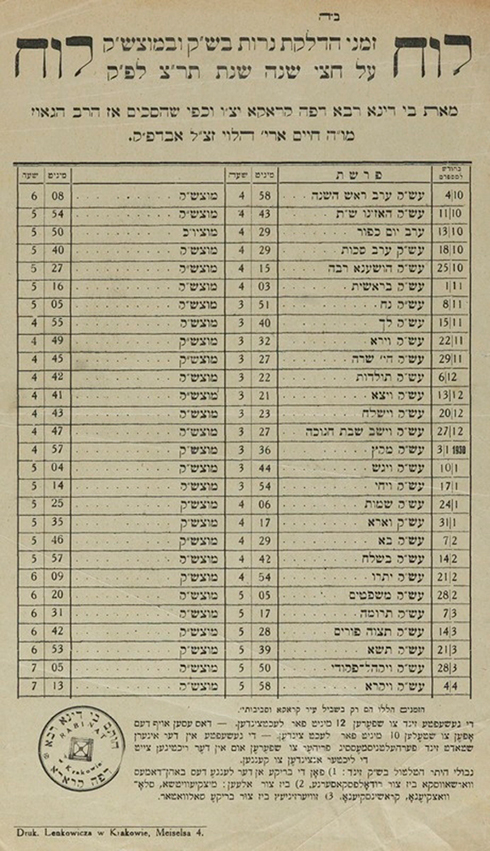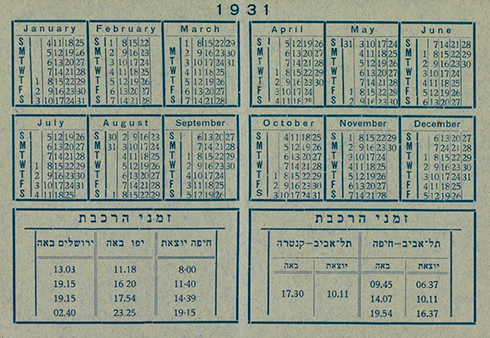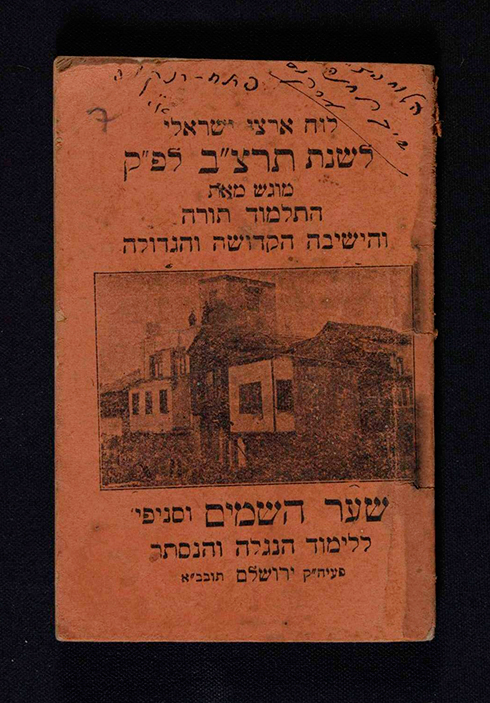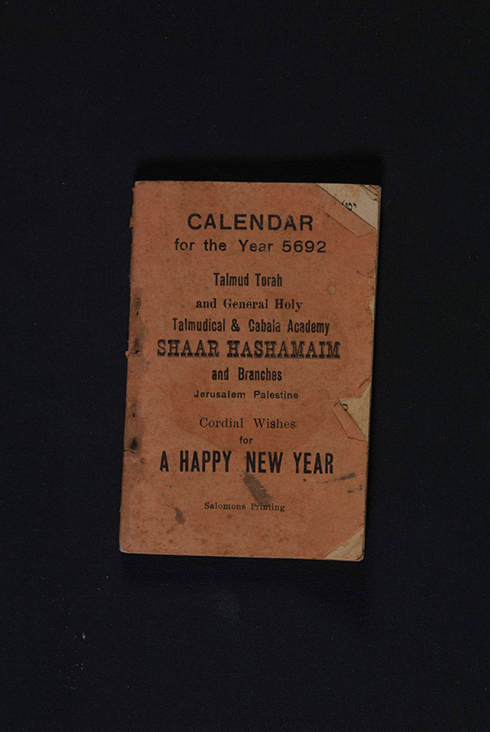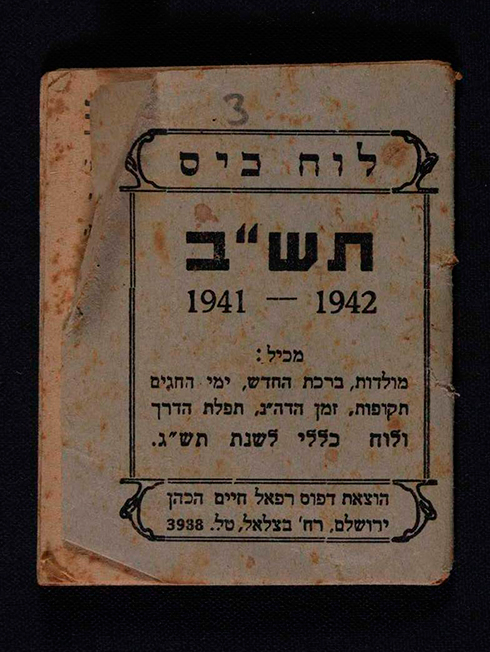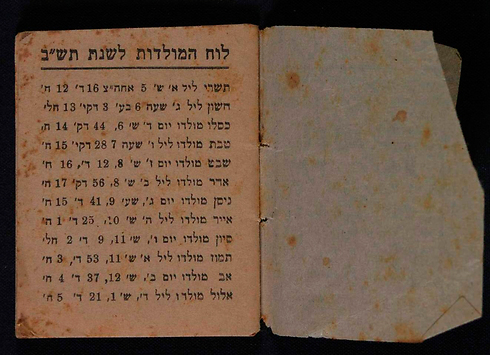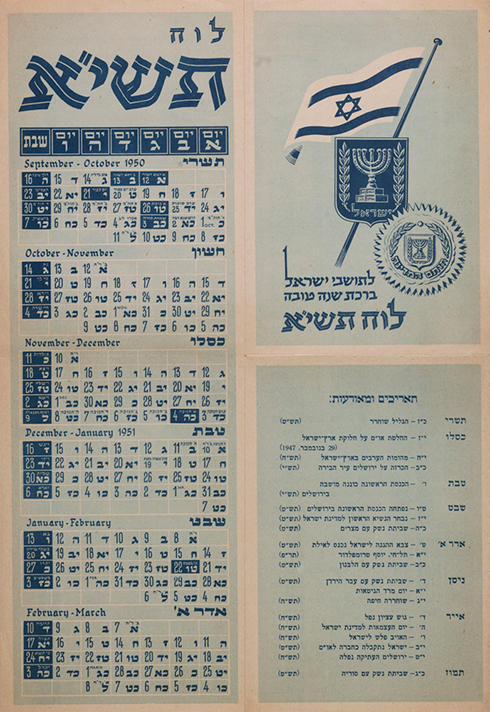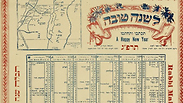
With the new year come new calendars, and this Rosh Hashana is no exception. Ynet took a stroll through the beautiful and intricate history of Jewish calendars with Dr. Yoram Meltzer, the editor of the National Library, and Dr. Hezi Amior, the library's chief curator.
"At first calendars came in the form of either books or notebooks," Meltzer explains, saying they were closer to almanacs than the calendars we've grown accustomed to. "They had exchange rates, weather predications, when the tide was in, and other a agriculture related information."
According to Amior, calendars became commonplace in the 18th century and could be found in every Jewish household throughout Europe ever since. However, the almanacs, which preceded the calendars, have been in popular use since the middle ages.
Amior explains: "These almanacs – much like the modern calendars – were great places to advertise and put information, as they would be viewed throughout the entire year."
This is a calendar printed in 1970, but it's more than an annual list of dates, rather a calendar spanning 540 years and it is valid until 2240, Amior explains. It was reprinted in 1816, after the first batch proved unpopular and slightly useless.
"The colander includes formulas for measuring times and dates in a time when annual calendars were nonexistent," Amior explains saying the "calendar (or panel) was created by an expert in Jewish astrology in Ahskenaz (Jewish medieval Germany) and has annotations in Yiddish and German."
"Jews settled in Jamaica even before the British took it over from the Spanish in 1655," Melzer explains "Jews were attracted because of its potential for commerce – namely gold and produce, but yes, also slaves," he said.
The almanac is not a Jewish calendar per se, but it includes Jewish dates, and the prominence of the island's Jewish residents is the reason why: "They were a large percentage of the islands merchants," he said.
However, the printer did not know Hebrew: "He tried to construct the letters to the best of his ability and copied them from some source he had at his disposal, but there are still a few typos." The calendar is a testimony to the prominence of the Jews in Jamaica, who were forced to hid their Judaism under Spanish rule.
"This is not some much as a functioning calendar as much as a gift," Amior explains. The calendar is a large and heavy board in London as a gift to Sir Moses Montefiore – a British-Jewish lord who heavily donated to the Zionist movement and was instrumental in forming the first Jewish neighborhood outside of Jerusalem's Old City.
The calendar contains astronomical information pertinent to maintaining a religious Jewish life, "people would use this to be able to calculate which Torah portion they need to read and when to light the candles. The reason it was built to be heavy was so that people would not be able to throw it away."
Written in Rashi font, this solar calendar is a bit of an odd bird – the dates and months are not Jewish but the font and rationale is.
"The board is divided into weeks with the times of sun rise and sunset noted, along with the length of the days and prayer times. At the top it reads 'let the light of the moon be like the light of the sun and may the sun be seven times (brighter). That means it is both a solar and lunar calendar and probably sat in either the home of a rabbi or a synagogue."
This calendar from pre-state Jerusalem served as a fundraiser for a seminary in Jerusalem, Amior explains: "They used to live off of donations from Europe," so they would send out these calendars so they would be hung the homes of their beneficiaries all year long – "it's a year' long add."
This calendar was also used as an add to promote both a charity and its afffialted seminary. "This was distributed in Jerusalem and it's unique because it comes with a map of the Greater Israel, as it was delineated in prophecy, all the way to the eastern Jordan river.
"It was printed in 1922, and it was till unclear if these areas would be part of the budding national homeland. Only a year before the Jordanian kingdom was established by the British."
"This is from the heyday of Poland's Jewish community life. It was printed and distributed in Kraków which only ten years later became a huge ghetto."
During British rule, train schedules came with a calendar, to allow travelers to better plan their journeys. "It doesn’t have a Jewish calendar because the train was run by the Brits, operated by the Palestine Railway."
Jewish pocket calendars 1931-1932
This is a Jewish pocket calendar for 1931-1931. It belongs to the Sharey Shamaim Seminary in Jerusalem, which is pictured on the calendar itself. 5692 (1931-1932) was special – it was a Jewish leap year and also a Shmita year.
"It only notes the Jewish תרצ"ב (5692) with an addition that says 'small details', meaning it was relevant only for that specific and special year. It notes the Jewish holidays with their local date – noted only once as is costmary in the Holy Land and not twice for each holiday as is the case for the Diaspora." It was also used to raise funds for the Yeshiva.
Pocket calendar 1941-1942
Trilingual calendar
This calendar printed in 5692 (1942) some six years before Israel was established and also served as a guide for religious Jews, it was printed for-profit.
This pocket calendar was in the form of a notebook for the Tehiya Printing House in Jerusalem, and according to Amior "represents the tri-lingual stage of the British mandate, and is in Hebrew, Arabic and English. And includes the Tefilat HaDerech (Traveler's Prayer)."
This calendar goes from left to right and each date has Biblical passage next to it. "For example the (Jewish) month of Kislev has a quote from Hanukah and hints at a connection with the War of Independent. Everything is written with a whiff of redemption, probably as a result of the state's formation" which was perceived as a redemption of the land.














